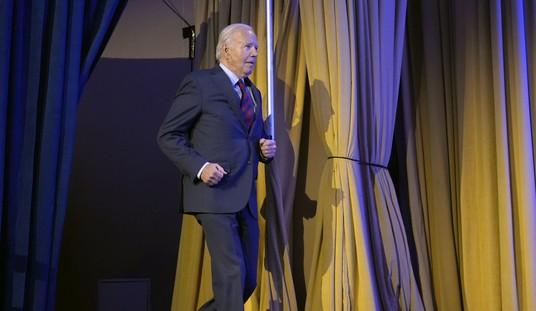The Airborne Laser program is a direct descendent of Ronald Reagan's visionary Strategic Defense Initiative (SDI), with its exploration of various means of intercepting and destroying ballistic missiles - including lasers and other "directed energy" techniques. Given the state of the art at the time, critics scoffed at the idea that these exotic, speed-of-light weapons could ever be made to work. The late Sen. Edward Kennedy exemplified this view when he dismissively dubbed the SDI program "Star Wars."

Today, however, it is the critics who look ridiculously shortsighted. Thanks to two decades of intensive research and development and an investment of roughly $5 billion, America's aerospace industry has achieved an extraordinary feat of science and engineering. They have successfully married a Boeing 747 airframe with three chemical lasers: a low-power system used for tracking a missile early in its flight; a second, low-energy laser that measures and calculates adjustments needed to compensate for atmospheric conditions; and a third, megawatt-class high energy laser that uses the others' data to destroy the missile by using its heat to induce structural failure.
The ALTB successfully performed this feat not once but twice on February 11, taking out first a short-range liquid-fueled missile and then a solid-fueled one representative of the sorts of threats emerging notably from North Korea and Iran. Importantly, these intercepts took place during the boost-phase - a capability that means the missile and its deadly payload could be destroyed over the territory of a would-be attacker. That potentially devastating prospect may serve as a further disincentive to a hostile power's launching the missile in the first place.
Recommended
At a time when the Obama administration is rushing anti-missile defenses systems to the Persian Gulf in the face of intensifying regional concerns about Iran's ballistic missiles, one could be forgiven for thinking that every effort would be made to bring to bear the Airborne Laser system's ability to perform boost-phase intercepts. Unfortunately, that is not the case.
Far from contemplating the early deployment of the ALTB, the Fiscal Year 2011 defense budget recently submitted to Congress by the Obama administration eliminates any further preparation of the platform as a weapon system. It will be confined, instead, to development and testing of laser technologies.
To be sure, the ALTB is not an operational weapon; it is a test-bed that has been painstakingly prepared to conduct certain experiments, not to deal with the myriad vicissitudes of war-fighting. Still, as Riki Ellison of the Missile Defense Advocacy Alliance pointed out last week, "The Airborne Laser is similar in some ways to the development of the Joint Stars 707 aircraft that was thrust into the [first] Iraq war as a test bed version and has become a tremendously useful military asset that is deployed in numbers today, providing sophisticated surveillance and tracking on the ground from the air."
The effective cashiering of the Airborne Laser fits a pattern of Obama defense procurement decisions with respect to advanced weaponry that is needed to provide our forces the qualitative edge upon which their mission success - and perhaps their lives and ours - may depend. For example, production has been halted on the world's best fighter aircraft, the F-22, well short of abiding Air Force requirements. Construction of stealthy, modern Zumwalt-class destroyers has been truncated in favor of additional purchases of ships with far more limited capability first designed 30 years ago. Defense Secretary Robert Gates will try once again to persuade Congress to stop further acquisition of the nation's only long-range, heavy airlifter, the C-17. And a succession of needed replacements for obsolescing weapon systems will remain right where they are: on the drawing boards.
Curiously, these actions are being taken at the same time as the Pentagon's new Quadrennial Defense Review (QDR) does, in the words of the top Republican on the House Armed Services Committee, Rep. Howard "Buck" McKeon, "an excellent job of delineating the threat posed by those with anti-access capabilities - notably, China." Mr. McKeon goes on, though, to observe that the QDR "does little to address the risk resulting from the gaps in funding, capability and force structure." In fact, the budget submitted by Defense Secretary Gates is explicitly focused on fighting more of today's wars (that is, low-intensity counter-insurgency operations), rather than contending with peer competitors.
The bottom line is simple: No other nation on earth capable of fielding the Airborne Laser, the F-22 and the other advanced weapons now on the Obama administration's chopping block would willingly abandon them. That is especially true of those hostile to freedom, which will strive to acquire through purchase, theft and/or their own efforts similar capabilities to those we are giving up. We engage in such unilateral disarmament at our extreme peril - both to the forces who truly need to be second to none as they fight the nation's wars, and to the rest of us whom they thereby seek to safeguard.

























Join the conversation as a VIP Member